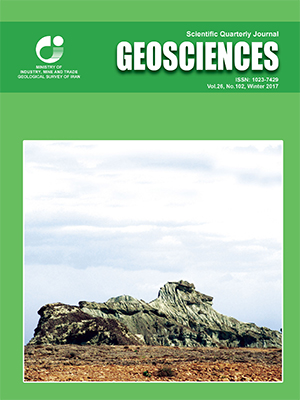Document Type : Original Research Paper
Authors
1 M.Sc., Research Institute for Earth Sciences, Geological Survey of Iran, Tehran, Iran
2 Associate Professor, Research Institute for Earth Sciences, Geological Survey of Iran, Tehran, Iran
3 Ph.D., Geological Survey of Iran, Tehran, Iran
Abstract
The Chahmora copper deposit is located at South west of Shahrud, within the Torud-Chahshirin magmatic arc. Mineralization in the Chahmora area occurred within volcanic units of Eocene. Based on field and laboratory investigations, the outcropped rocks in the Chahmora deposit are andesite, andesite – basalt, trachy andesite, trachy andesite basalt and several small exposures of pyroclastic rocks such as agglomerate. Basic to intermediate sub-volcanic bodies intruded Eocene volcanic-pyroclastic sequences. The rocks are high-K, calc-alkaline to shoshonitic in nature, and are formed at a magmatic arc setting in a subduction zone. The host rocks have been affected by silicification, carbonatization, sericitization and chloritization. The textures and structures of mineralization are vein-veinlet, replacement and open space filling. According to the mineralography studies, main minerals of copper are chalcocite, chalcopyrite, covellite, digenite, cuprite, malachite and rare native copper together with hematite. Chalcocite and malachite are the most abundant minerals. Geochemical studies indicate that copper has only relative correlation with silver (R=0.894) and arsenic (R=0.520).Since silver has not founded as an independent crystalline phase, therefore copper was replaced by silver in chalcocite. . Fluid inclusion studies on trapped fluids in quartz and calcite show average homogenization temperature of 200-220ºC and fluids salinity degree of 0/97-1/37 and 3/67-4/07 %wt NaCl. Copper mineralization in the Chahmora deposit has similarities in mineralogy, host rock, texture, structure and geometry with manto-type and volcanic red bed copper deposits.
Keywords

